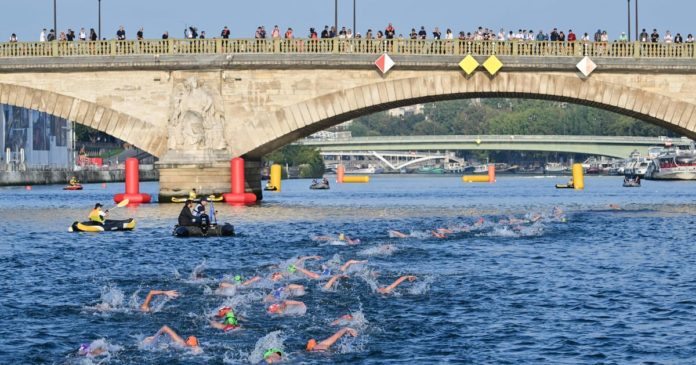Eau de Paris’ data showed that high levels of E. coli bacteria were detected in the river at least once during every day of the first week of the Olympics, between July 26 and Sunday, with two exceptions: July 30 and July 31, the day of the men’s and women’s triathlon.
On the day of the race, the tests identified bacteria levels within the safety standards set by World Triathlon, which indicate that colony-forming units (CFU) of E. coli per 100 milliliters of water should not exceed 1,000 and Enterococci levels should be below 400 CFU/100ml. According to World Triathlon standards, the Seine river was of “very good” quality — with Enterococci levels below 200 and E. coli levels below 500 — during seven of the eight tests throughout the morning and of “good” quality during one test (with Enterococci concentration below 400 and an E. coli below 1,000).
E. coli levels were also below the maximum safety threshold on Monday, when the team triathlon relay was held. However, an Enterococci concentration of 436 CFU/100mL, above the safety standard, was detected at one test point at 5:45 a.m., a little more than two hours before the race.
During a press conference the day after the event, Paris 2024 spokesperson Anne Descamps underlined that the race had been allowed to go forward as this specific test had been made outside the race course.
“The only point in which the Enterococci levels were slightly above our limits was outside and downstream of the swim course of the Mixed Relay,” World Triathlon, who was responsible for deciding if the race should go forward, told POLITICO in a statement.
The test point where the excess of Enterococci bacteria was detected was located at the port du Gros Caillou, about 200 meters away from the race course, which spanned roughly between the Pont Alexandre III and the Pont des Invalides.


